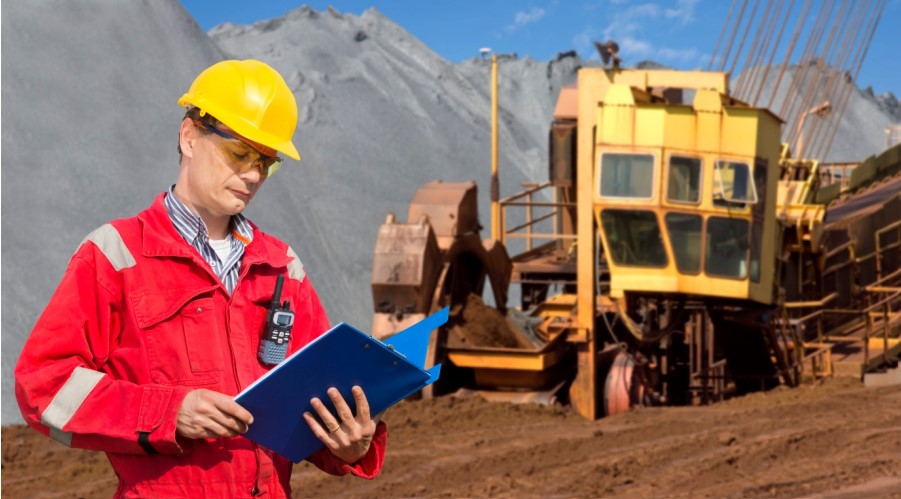It might be thrilling and intimidating to start writing a mining engineering dissertation. It’s critical to have a strong structure as you dive deeper into your research. It not only demonstrates your competence but also leads readers through your complex journey of mining engineering.
According to Research Nester, the mining industry was valued at approximately USD 23.70 billion in 2022. However, the underground mining market is expected to reach over USD 34.97 billion by 2033, growing at a rate of 3.62% from 2023 to 2033.
When it comes to writing a dissertation on mining engineering, students often get tensed about how to structure it well. Do not worry when you have our in-depth guide to assist you in developing an organised mining engineering dissertation structure. But before that, let’s explore the basics of mining engineering.
What is Mining Engineering?
Mining engineering covers the science and technology of extracting valuable minerals from the Earth. It includes organising and securely executing the extraction of resources that are necessary for daily living, such as metals, minerals, and coal.
According to Queen’s Engineering, an ordinary American-born depends on about 2 million pounds of mined resources from the earth for everything from cell phones to laundry detergent and more.
With the exception of plants, almost everything society uses is derived from the soil. Mining produces gold, silver, nickel, platinum, iron, lithium, nuclear fuel, potash, building materials, coal, and oil. We still require a large amount of mined resources; that is why the trend towards mining engineering study is increasing day by day.
Many students find it tough to write on such a detailed task and find someone to write their dissertation. However, if you also have trouble crafting a perfect paper, you can get mining engineering dissertation writing services UK. Follow the given steps to structure your dissertation on mining engineering well.
How to Structure and Write a Mining Engineering Dissertation?
To write a perfect dissertation, you must follow a proper structure to make it well-organised and impactful. The paper Quantitative Indicators of Social Sustainability Applicable in Process Systems Engineering explained the dissertation structure like this:
1. Select a Topic
Selecting an engaging and relevant topic is the cornerstone of any good dissertation. Examine current trends, business obstacles, or gaps in the literature to start. Your choice of topic should not only suit your interests but also make a significant contribution to the mining engineering community.
2. Make Your Title
The reader should understand exactly what your dissertation is about from the title alone. If it’s not clear, your dissertation may also turn out to be ambiguous. So, take your time coming up with a catchy title, and don’t hesitate to change it if your investigation goes in a different direction.
Let’s take a look at some mining engineering dissertation topics with a clear focus on a particular issue that they hope to tackle.
- Role of Engineering Council in the Institute of Materials Minerals and Mining (IOM3)
- Drill and Blast Techniques in Large-Scale Open Pit Mining
- Civil Engineering Innovations in Mineral Engineering
- Rock-Breaking Work Experience of Mining Engineers
3. Abstract
Your abstract is the first thing your reader sees, following the title. The secret is to write it in the last. The abstract, which covers objectives, methodology, findings, and conclusions, functions as a condensed version of your whole project.
But this cannot be assembled until all other writing has been completed. It’s similar to a movie trailer that draws attention to the key points and piques viewers’ interest towards the whole movie.
4. Introduction
Your research is accessible through the introduction of your mining engineering dissertation. Begin with an attention-grabbing hook that emphasises the importance of your selected subject.
Clearly express your research questions or objectives, the research challenge, and any prior information. Furthermore, provide a brief summary of your technique and the dissertation’s structure to wrap up the introduction.
5. Literature Review
Your dissertation’s core is a strong literature review. Perform a thorough analysis of the body of knowledge already available on the subject. Determine the main theories, approaches, and conclusions that will guide your investigation.
Establish the background for your research by critically analysing and synthesising the data you have collected. It indicates that you are aware of the condition of mining engineering research at the moment.
6. Methodology
Explain the processes, methodologies, and research design that were used in your mining engineering dissertation. Explain why the strategy you’ve chosen is the best one to use and why it will answer your research questions.
Provide information about sample selection, data collection techniques, and any tools or instruments utilised. To guarantee the reproducibility of your research, this area must be clear and transparent.
In a paper by Mahmud Al Noor Tushar, the following methodology steps are given to follow in your dissertation.
7. Results
This step basically involves the data analysis and findings of your dissertation on mining engineering. You should deliver your study’s end results in an understandable and well-structured way. Make better use of charts, graphs, and tables to improve the visuals of your data.
Moreover, analyse your findings in light of your goals and research questions. Be open and honest about any restrictions or difficulties you face while gathering and analysing data.
8. Discussion
Discuss your results critically and connect them to previous research in your mining engineering dissertation. Examine the effects of your findings on the mining engineering community as a whole.
Discuss any surprising results and provide suggestions for future study directions. This section demonstrates your ability to think critically and your in-depth knowledge of the subject.
9. Conclusion
Write a summary of your research’s main conclusions and contributions. Summarise the importance of your research and how it might affect the mining engineering community. You should add a succinct summary of your work in the end rather than explaining any new material.
10. Citations
Make a thorough list of all the references used in your mining engineering dissertation. Consistently adhere to the citation style that your supervisor or organisation recommends.
There are various styles like Chicago, APA, MLA and Harward that you can use. In fact, you should benefit from reference management tools to make this referencing process easy.
11. Appendices
Add any further items to the appendices, such as surveys, questionnaires, or additional statistics. Although it is optional, this element can still improve the reliability of your study.
12. Editing and Proofreading
Edit and proofread your dissertation thoroughly before submitting it. Check the formatting, punctuation, and spelling for consistency and remove all the mistakes. To ensure your document is coherent and clear, think about asking advisors or peers for honest feedback.
Conclusion
It takes much preparation and close attention to detail to write a well-organised mining engineering dissertation. By following the above-mentioned structure in this guide, you can produce an engaging and cohesive academic work. It will not only demonstrate your proficiency but also make a significant contribution to the area. To fulfil your mining engineering research, the success of your dissertation is crucial.
However, if you have a shortage of time but still want to write it perfectly, get mining engineering dissertation help UK from experts. They offer customised help to students worldwide.










